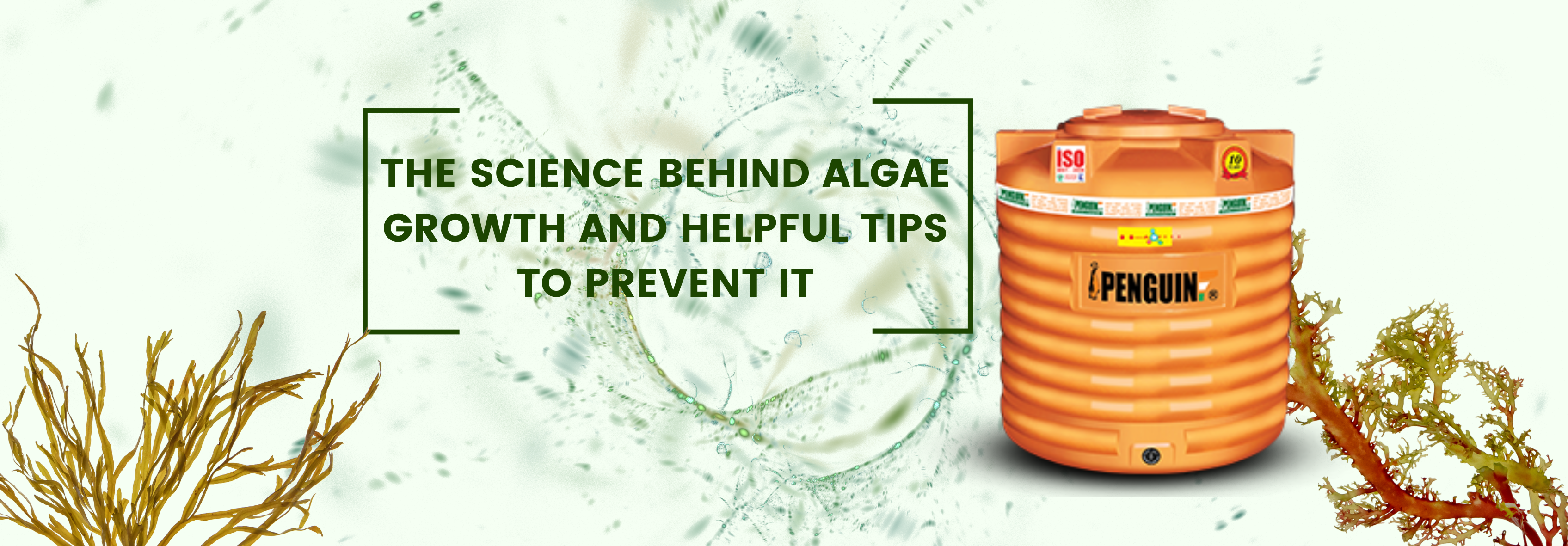The Science Behind Algae Growth And Helpful Tips To Prevent It
- December 11, 2023
- Posted by: ptbloguser
- Category: Plastic Water Storage Tank

Algae Growth in a water storage tank is a typical concern that can cause issues with water quality and maintenance. Managing the presence of algae can be helped by knowing the science behind its growth and taking preventative action. Therefore, today’s blog is all about this.
How Is Algae Formed?
Algae is a diverse group of photosynthesis organisms that grows in aquatic environments where sunlight and nutrients are abundant. Because of the standing water and the deposition of organic materials, water storage tanks are perfect places for algae to grow. Algal spores, which are frequently transported into the tank by the wind, birds, or other natural methods, are responsible for the algae growth process. Once these spores are inside the tank, they find the right environment to grow and multiply quickly.
The following are the main causes of algal development in commercial water storage tanks:
- Exposure To sunshine:
Photosynthesis, the process by which algae transform light energy into chemical energy, depends on sunshine.
- Levels Of Nutrients:
To flourish, algae need nutrients like nitrogen and phosphorus. These nutrients can be introduced into the water tank by organic waste, like leaves, bird excreta, and other trash, which will lead to the growth of algae.
- Temperature:
Warmer climates are often better for algae growth. Higher temperatures cause the water within the tank to become the perfect environment for algae to grow.
How Do I Prevent It?
Below are the helpful tips given by the experts of the No. 1 plastic water tank company in Eastern India. So go through these preventive measures carefully:
- Tank Design:
Choose materials that are opaque or UV-resistant to prevent sunlight from entering the tank. As a result, light cannot enter the tank, which prevents the photosynthesis of algae.
- Location Of The Tank:
Place tanks in shady spots or cover them to keep away the sun’s rays. As a result, less light reaches the water, which prevents algae from growing.
- Frequent Cleaning:
To get rid of any collected organic waste, silt, and debris, clean and inspect the tank regularly.
- Water Aeration:
To keep the water flowing, install water aeration systems. Aeration enhances overall water quality by preventing stagnation and preventing the formation of algae.
Conclusion-
By knowing the science behind the formation of algae in plastic water storage tanks, we can take preventive steps that work. We can make sure that the water in our storage tanks is clean and safe by taking these preventive measures, as suggested above in this blog. Regular maintenance and monitoring are key to ensuring the effectiveness of these tips.
To get an ISI tank in West Bengal, get in touch with us at Penguin Tank.
Also Read: Innovative Water Tank Solutions for Sustainable Water Management
